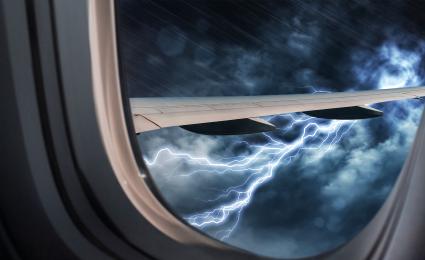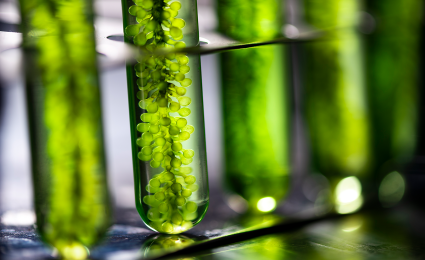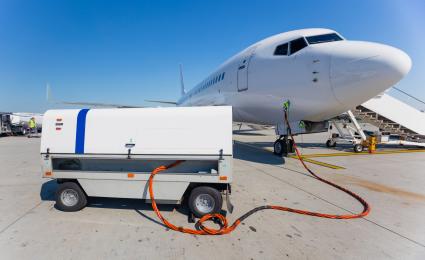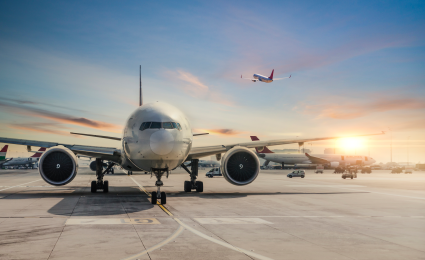Learn more about this year's aerospace and defence survey and get insights into pre-and post-Covid industry priorities.


The decarbonization of aviation – hydrogen propulsion, SAF and electric technology
A decarbonized future poses new challenges
The growing trend towards increased sustainability is reaching the aviation industry. Airbus is focusing primarily on the use of hydrogen engines and sustainable aircraft fuels (SAF) to decarbonize its business. Achieving a decarbonized future depends on transferring certain aspects of aerospace technology into passenger aircraft. Find out more about the challenges of a sustainable aviation ecosystem and what role industry players will need to take in this interview with Nicole Dreyer-Langlet, Vice President Research & Technology and Member of the Board of Airbus Operations GmbH.
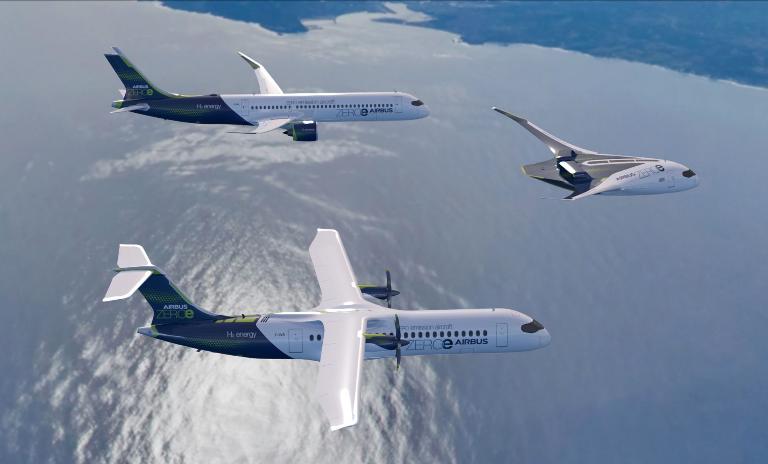
"The aircraft of tomorrow need an innovative infrastructure if the ambition of emission-free flight is to be achieved."
Which of the technologies will lead the way in decarbonizing aviation – will it be hydrogen, SAF or some form of electric propulsion?
In our opinion, there are several technologies that complement each other well. These include both hydrogen and SAF, as well as the continued optimization of flight paths and air traffic management.
In the case of hydrogen, we see direct combustion in the turbofan or turboprop engine as one technology path, and the use of hydrogen-based SAF as another. And there are also today’s biomass-based sustainable aircraft fuels.
The use of hydrogen in fuel cells is an equally forward-looking approach. One of the things such fuel cells can do is supply electricity for electric motors, which could conceivably be used in a hybrid concept. Electrical energy is also important for supplying other onboard systems, such as the hydraulics and air conditioning. These systems are currently supplied by the engine.
In the ZEROe concepts for hydrogen aircraft we distinguish between three core concepts:
- The first is an aircraft with turboprop propulsion for up to 100 passengers, with a range of about 1,000 nautical miles. The hydrogen tank would be located behind the rear pressure bulkhead behind the passenger cabin.
- The second envisages turbofan propulsion and capacity for up to 200 passengers. Here, too, the tank would be located behind the rear pressure bulkhead. The range is around 2,000 nautical miles.
- For the third concept, we're looking at the blended wing body. This, too, could fly 200 passengers some 2,000 nautical miles. The concept offers brand new possibilities for where the tanks could go. On the other hand, it requires a complete rethink of the cabin design and many other factors. And achieving certification is just as demanding as designing the aircraft architecture. The relevant certification bodies will have their work cut out dealing with the new design.
How does Airbus plan to mitigate the negative environmental impact of hydrogen propulsion, particularly in terms of contrails/water vapor and, in the case of hydrogen combustion, NOx emissions?
There are several possible ways of doing this. One way would be to use a hybrid engine consisting of an electric motor alongside combustion technology. This would reduce the amount of combustion during cruising flight. But then flight control plays a key role too. By making the aircraft's trajectory more flexible, it will be possible to avoid certain altitude bands or regions where the atmospheric conditions are favorable for the formation of contrails.
What are the key challenges to be faced in achieving a hydrogen-powered aviation ecosystem?
A team effort across business sectors will be needed to achieve the further industrialization and scaling of hydrogen. It will rely on sector coupling and connecting with other modes of transport and industries. A good example can be found right on Airbus's doorstep in Hamburg in the form of IPCEI, the Important Project of Common European Interest. It has the entire value chain represented: First, you have the energy utilities who produce green hydrogen from wind power. Then comes the distribution via the Hamburg gas grid – based on exploiting the existing expertise and infrastructure. Connected to this is a gigantic industrial zone with the port, metal processing businesses, logistics providers and Airbus too. Hydrogen use on land, on water and in the air is the future.
What is Airbus doing to enable this decarbonized future?
We're contributing our core competency – the development and manufacture of commercial aircraft. Hydrogen propulsion is not in itself a new technology. It was used to fly astronauts to the moon more than 50 years ago. It has also been tested with commercial aircraft: in Russia, for example, in the 1990s with a specially converted Tupolev. In Europe, the Cryoplane project laid some important foundations in the 2000s.
But there is a difference between flying five people to the ISS in Earth's orbit and flying 150 passengers from Hamburg to Munich five times a day. What we have to do here is make parts of the technology that are used in space travel suitable for everyday passenger flights. A commercial aircraft like the A320 has a takeoff reliability of more than 99.7 percent and is in service for around 30 years. And there are extremely high safety requirements. All this is the yardstick by which the airlines will measure us.
Our goal is to define and analyze the individual parts of the technology in detail by around 2025. Then we will decide what the overall aircraft should look like. The timeline for entry into market of the ZEROe aircraft is 2035.
What role do industry players – governments, airlines, fuel producers, airports, suppliers and so on – need to take here?
It needs to be clear to everyone that we will only be successful in decarbonization and the development of a hydrogen infrastructure if we work together. Energy utilities and fuel producers have the key role in the production of SAF and green hydrogen. Governments must foster this accordingly. Airports need to build the appropriate infrastructure to supply these fuels. However, it must all be done on the basis of common, global standards, like we already have in aviation today.
There is no time to lose. Production capacities and future-proof infrastructure for SAF and hydrogen must be built in parallel with the aircraft development. The aircraft of tomorrow also need the infrastructure of tomorrow. Only then can the ambition of emission-free flight be achieved.
Register now to receive regular insights into Aerospace & Defense topics.


